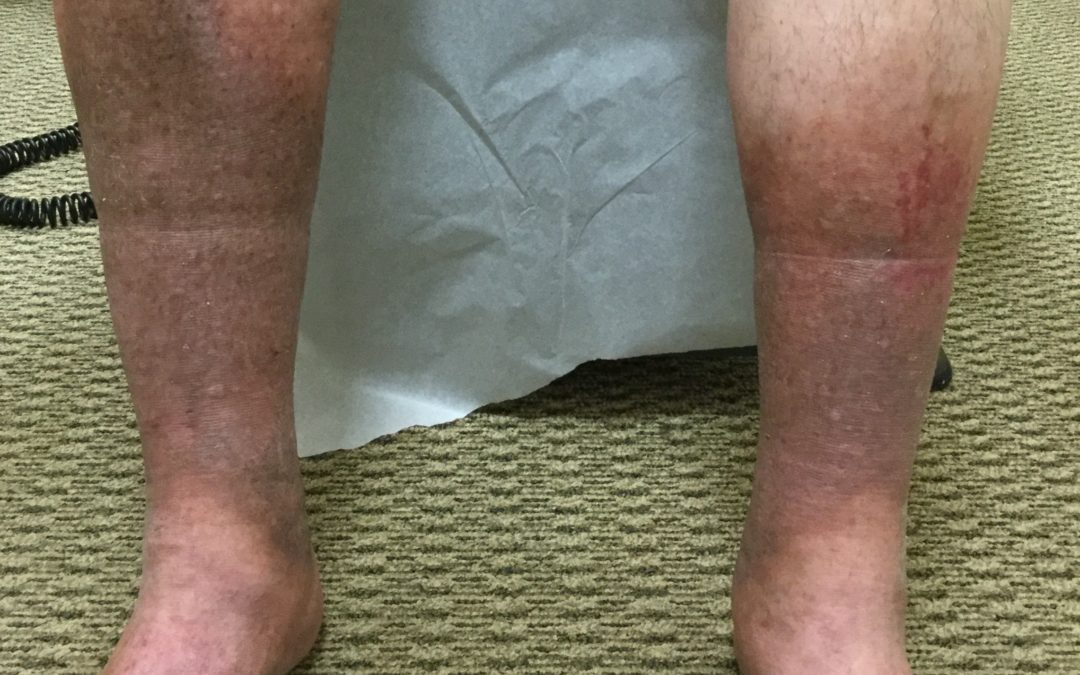Brown spots can appear on the legs for many reasons.
In some cases, those pigmentation marks may be nothing more than a freckle or age spot – often the result of sun exposure. However, there are other types of brown spots that could indicate a serious underlying condition, such as cancer or a venous disorder. It is a good idea to have new brown spots examined by a physician that can let you know why the brown spot developed and what you can do to eliminate it.
Brown Spots May Be Age Spots
Age spots are probably the most common reason for brown spots on your legs or other areas of the body. These spots typically occur as a result of sun exposure, but can also be due to hormonal fluctuations, pregnancy or some types of medication. Cosmetic treatments can eliminate age spots if you choose to pursue them. However, age spots are not usually a medical concern and can be left alone indefinitely if you prefer.
Actinic Keratosis
This type of lesion tends to be red rather than brown and has a raised, scaly appearance. Like age spots, these lesions tend to occur on areas of the skin that are frequently exposed to the sun. Actinic keratosis is considered precancerous and for this reason, removal is nearly always recommended.
Diabetes
People with diabetes can develop brown spots on their lower legs, known as diabetic dermopathy. This condition usually appears on the lower legs, especially around the shins. In some cases, the lesions may look like small scars. While these lesions may be a predecessor to a diabetes diagnosis, they are rarely cause for medical concern on their own.
Venous Insufficiency
One of the most common reasons for brown spots on the leg, particularly around the ankle, is an underlying vein disorder known as venous insufficiency. This condition occurs when valves inside the veins of the lower leg stop working properly, allowing blood to pool inside the vessel. The result is weakening of the vessel and visible varicosity in some cases.
Venous insufficiency can also lead to leakage of blood outside the vessel, which can lead to discoloration of skin and tissue by the iron in the blood. Over time, this discoloration can result in damage to the skin and tissue, which may become permanent. Other changes you might notice include thickening and tightening of the skin, often because of fluid retention in the underlying tissue.
When the skin changes become pronounced, the skin becomes more vulnerable to injury. Even a small nick can transform into a large open sore, known as a venous ulcer. These skin ulcerations are prone to infection and have a high recurrence rate, making them very difficult to treat. It is best to tackle the condition at the earliest signs of skin changes, rather than waiting until a venous ulcer develops.
When brown spots are due to venous insufficiency, the best way to treat the skin condition is to treat the underlying vein disorder. There are a number of minimally-invasive treatment options for venous insufficiency today, which typically involve elimination of the damaged vein so blood can naturally reroute to healthier veins nearby. When treatment is performed early, skin may return to normal over time.
If you are noticing changes to the skin of your lower legs, a vein assessment is a good first step to an accurate diagnosis and effective treatment. To learn more, contact Vein Specialists of the Carolinas today at 704-544-5245 or 704-861-2072.
Ask us about our skin repair cream – Dermaka!
“All We Do Is Veins, All Day Every Day.”

